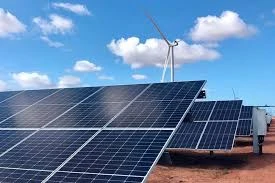Understanding the Dimensions of Polycrystalline Solar Panels for Optimal Energy Efficiency
The Significance of Polycrystalline Solar Panel Size in Renewable Energy
Polycrystalline solar panels have gained significant attention in the renewable energy market due to their efficiency, cost-effectiveness, and environmental benefits. As households and businesses increasingly seek to reduce their carbon footprints and embrace sustainable energy sources, understanding the size of these solar panels becomes crucial. This article will explore the importance of polycrystalline solar panel size, how it affects performance, installation, and overall energy output, as well as considerations prospective buyers should keep in mind.
Understanding Polycrystalline Solar Panels
Polycrystalline solar panels are made from multiple silicon crystals melted together. This manufacturing process makes them less expensive to produce than their monocrystalline counterparts, which are made from a single crystal structure. While they may have slightly lower efficiency rates—typically around 15-20% compared to 18-22% for monocrystalline panels—polycrystalline panels are an excellent option for those looking for affordable solar solutions.
The Role of Size in Solar Panel Performance
When evaluating solar panels, size matters. The dimensions of polycrystalline solar panels typically range from about 60 to 72 cells, equating to a size of approximately 1.6 to 1.7 square meters for a standard 60-cell panel. Larger panels can produce more electricity, but they may require more space for installation. The wattage output of these panels generally varies from 240 watts to 320 watts for 60-cell panels, with larger models offering increased power generation.
The size of a solar panel directly impacts its overall efficiency and energy output depending on the amount of sunlight it receives. A larger panel can capture more sunlight, thus producing more energy. However, it’s essential to balance size with available roof space and local regulations that may limit the extent of solar installations.
Installation Considerations
polycrystalline solar panel size

When planning a solar installation, size is one of the most crucial factors to consider. Homeowners and businesses need to assess the available roof or ground space. For instance, if a rooftop has limited area, smaller polycrystalline panels may be more appropriate, allowing for a customized array that maximizes energy capture without overcrowding.
Moreover, the weight of polycrystalline solar panels should not be underestimated. Larger panels may require additional reinforcement or structural considerations to support their weight. Therefore, consulting with a professional installer can help you determine the best panel size that aligns with your space and structural capabilities.
Energy Output and Financial Implications
Another critical aspect to consider is the financial implications of solar panel size. Larger panels may have a higher upfront cost; however, they tend to generate more power over time, leading to greater savings on energy bills. The installation of a well-optimized solar array can result in substantial long-term financial benefits, especially as energy prices continue to rise.
Additionally, many regions offer incentives for solar installations, including tax credits and rebates, which can help offset initial costs. Understanding how the size of polycrystalline panels affects eligibility for such incentives can lead to better financial planning.
Conclusion
In conclusion, the size of polycrystalline solar panels plays a vital role in determining the efficiency, energy output, and overall success of solar energy systems. As the push for renewable energy solutions continues to grow, it is essential for consumers to thoroughly evaluate their options. By taking into account the available installation space, the desired energy output, and financial considerations, homeowners and businesses can make informed decisions that not only meet their energy needs but also contribute to a more sustainable future.
Investing in polycrystalline solar technology is not only beneficial for individual energy consumption but also plays a part in the broader movement toward renewable energy. By understanding the significance of solar panel size, consumers can empower themselves to make choices that align with both their environmental goals and financial circumstances.
-
Unlocking Energy Freedom with the Off Grid Solar InverterNewsJun.06,2025
-
Unlock More Solar Power with a High-Efficiency Bifacial Solar PanelNewsJun.06,2025
-
Power Your Future with High-Efficiency Monocrystalline Solar PanelsNewsJun.06,2025
-
Next-Gen Solar Power Starts with Micro Solar InvertersNewsJun.06,2025
-
Harnessing Peak Efficiency with the On Grid Solar InverterNewsJun.06,2025
-
Discover Unmatched Efficiency with the Latest String Solar InverterNewsJun.06,2025







